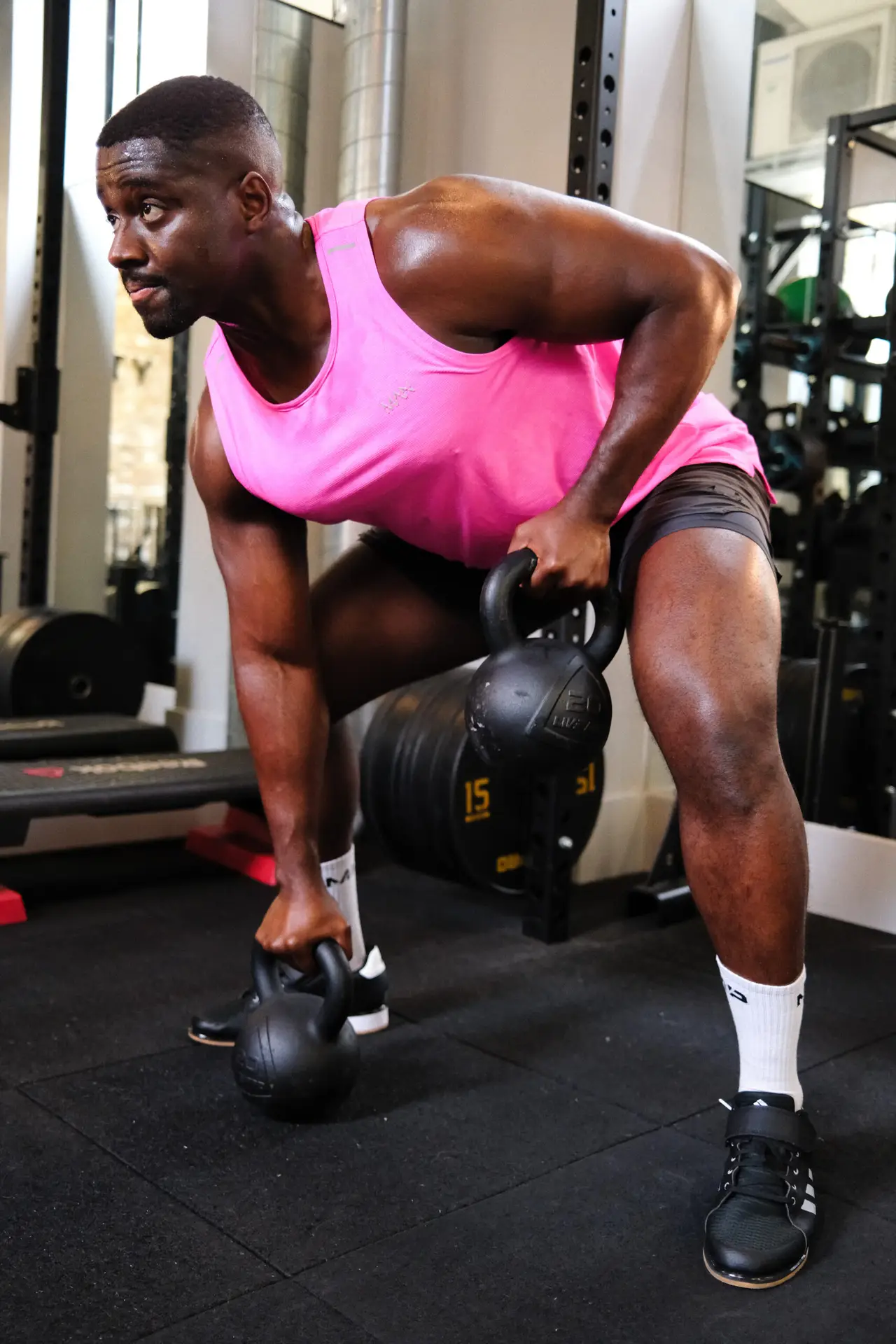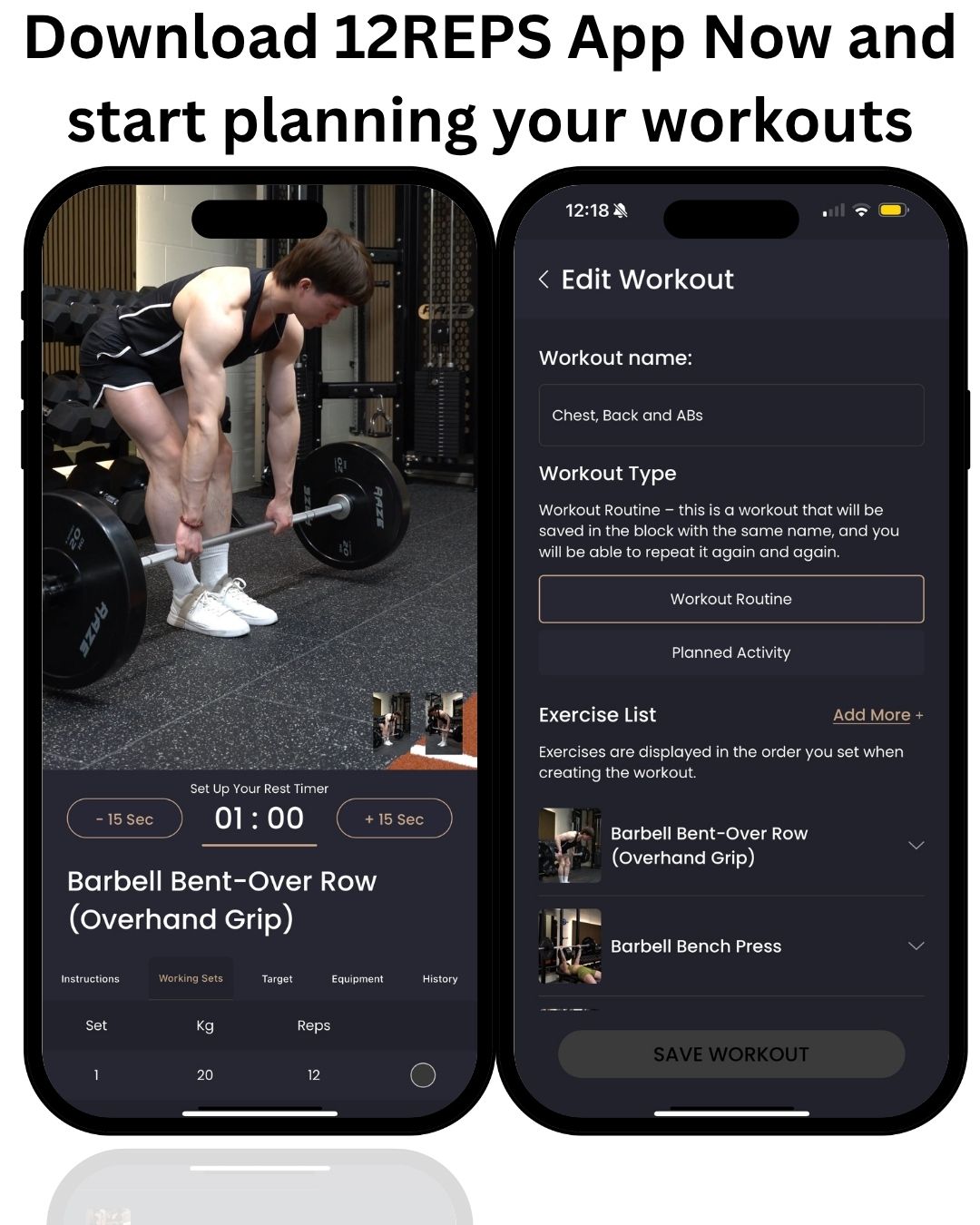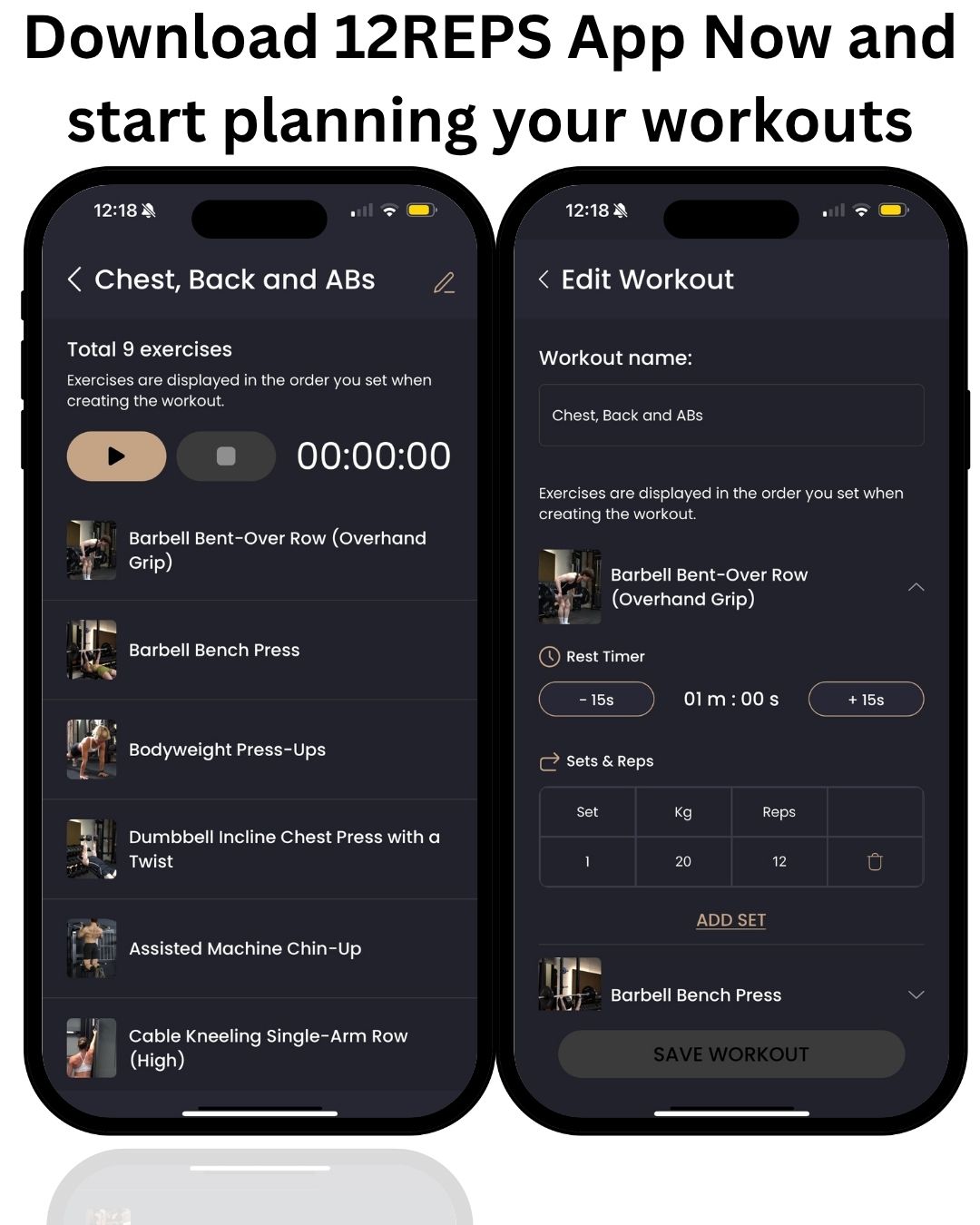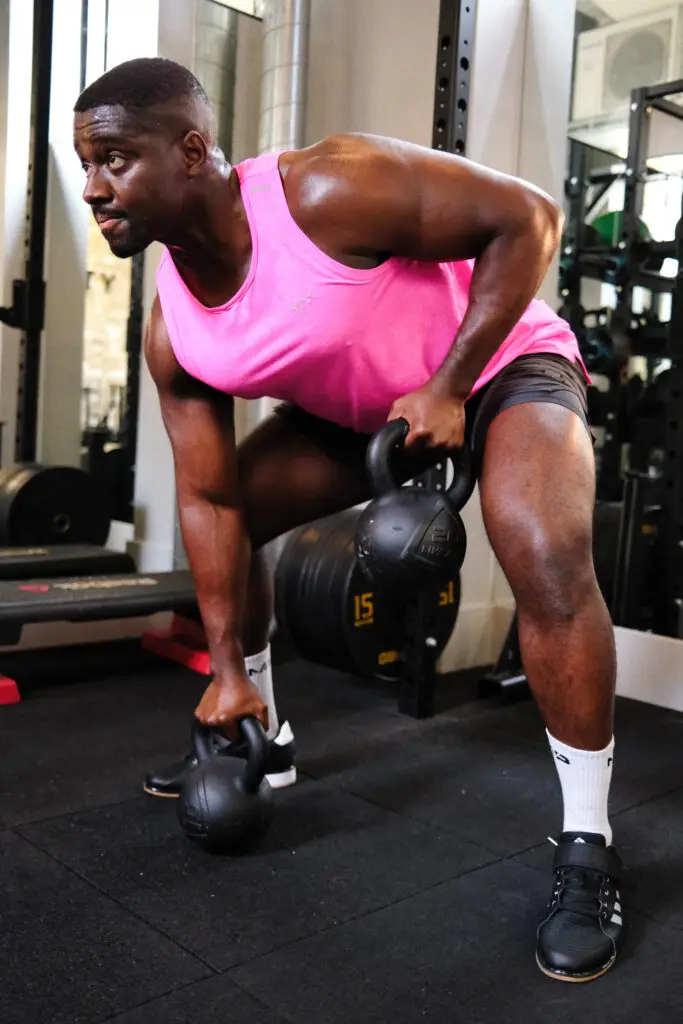Following on from our discussion about workout duration, the next logical question I often hear as a personal trainer is, “How many days a week should I work out?” Just like workout length, the answer isn’t a one-size-fits-all solution. The optimal training frequency depends heavily on your experience level, your specific goals, the type of training you’re doing, and most importantly, your ability to recover.
My name is Will Duru, and with a BSc (Hons) in Sport and Exercise Science and over 10 years of experience as an award-winning personal trainer, I’ve dedicated my career to helping people optimise their training and recovery. The biggest mistake I see people make is thinking that more is always better. In reality, your body gets stronger during periods of rest, not during the workout itself. Finding the right balance between training and recovery is the true secret to long-term progress.
In this article, we’ll dive into the science-backed guidelines for workout frequency, explore how to schedule your week based on your training type, and discuss how using a modern workout planner and tracker can help you create the perfect schedule to reach your goals without burning out. Whether you need a home workout planner and tracker or a comprehensive fitness and exercise tracker for the gym, understanding frequency is key.
(Body transformation video) Download the 12reps app to start your transformation.
Beginner Workout Frequency Guidelines
When you’re starting your fitness journey, your enthusiasm can be a powerful motivator. However, it’s crucial to channel that energy wisely to avoid injury and burnout. Here’s how to approach your training frequency based on your experience level.
2-3 days per week for beginners
For someone new to structured exercise, training 2-3 days per week is the ideal starting point. This frequency provides enough stimulus to challenge your muscles and cardiovascular system to adapt and grow stronger, while also allowing ample time for recovery. Research consistently shows that beginners can make significant progress with this moderate approach, often seeing improvements in strength and muscle mass within the first few weeks.
A full-body workout routine is often best for beginners, as it trains all major muscle groups in each session. This approach ensures that you’re building a solid foundation of strength and coordination across your entire body. When you’re new to exercise, your nervous system needs time to learn movement patterns and coordinate muscle activation. Training the same movements multiple times per week helps accelerate this learning process.
The beauty of starting with 2-3 days per week is that it allows your body to adapt gradually. Your muscles, joints, tendons, and ligaments all need time to strengthen and adapt to the new demands being placed on them. Jumping into a high-frequency routine too quickly often leads to excessive soreness, fatigue, and potentially injury.
Remember, consistency is more important than intensity in the beginning. The goal is to build a sustainable habit that you can maintain long-term. Many beginners make the mistake of going all-out for a few weeks, only to burn out and quit. By starting conservatively, you’re much more likely to stick with your program and see lasting results.
4-5 days for intermediate
Once you have been training consistently for about six months to a year and your body has adapted, you can be considered an intermediate lifter. At this stage, you can increase your training frequency to 4-5 days per week to continue making progress. Your body has now adapted to the basic stress of exercise, and you need more volume and frequency to continue seeing improvements.
This is often the point where people switch from full-body workouts to a split routine, such as an upper/lower body split or a push/pull/legs routine. This allows you to increase the training volume for each muscle group while still allowing for adequate recovery. For example, you could train your upper body on Monday and Thursday, and your lower body on Tuesday and Friday. This gives each muscle group 72 hours of recovery time between sessions.
The transition to higher frequency training should be gradual. Don’t jump from 3 days to 5 days overnight. Instead, add one additional day for a few weeks, assess how you feel, and then consider adding another if needed. Your recovery capacity will continue to improve as you get more experienced, but it’s still important to listen to your body.
At the intermediate level, you might also start incorporating different types of training on different days. For instance, you could do strength-focused workouts on some days and higher-volume, muscle-building workouts on others. This variety helps prevent plateaus and keeps your training interesting.
6 days for advanced (with proper recovery)
Advanced individuals, who have been training seriously for several years, may benefit from training up to 6 days per week. This high frequency is only effective if recovery is meticulously managed. At this level, you’re operating near the upper limits of what your body can handle, so every aspect of recovery becomes critical.
This includes getting enough sleep (7-9 hours per night), eating a nutritious diet with adequate protein and calories, managing stress levels, and listening to your body’s signals. Advanced lifters often use highly specific split routines that target individual muscle groups on different days, allowing other parts of the body to recover. For example, a typical advanced split might look like: chest and triceps on Monday, back and biceps on Tuesday, legs on Wednesday, shoulders on Thursday, arms on Friday, and a lighter full-body session on Saturday.
The key to making high-frequency training work is periodization. This means systematically varying your training intensity, volume, and focus over time. You might have periods of higher intensity with lower volume, followed by periods of higher volume with moderate intensity. This prevents your body from adapting too completely to any one stimulus and helps prevent overtraining.
It is crucial to understand that this level of frequency is not necessary for most people and can easily lead to overtraining if not managed properly. Signs of overtraining include persistent fatigue, declining performance, mood changes, increased injury risk, and disrupted sleep patterns. If you experience any of these symptoms, it’s important to reduce your training frequency and focus on recovery.

Workout Frequency by Training Type
Your training frequency will also depend on the type of exercise you are doing. Strength training and cardio have different demands on the body and require different recovery times.
Strength training: 2-4 times per week
For most people, strength training 2-4 times per week is the sweet spot for building muscle and strength. A comprehensive meta-analysis published in the journal Sports Medicine found that training a muscle group twice a week is superior to once a week for muscle growth [1]. This research analysed multiple studies and found that higher training frequencies led to greater muscle hypertrophy when total weekly volume was controlled.
This doesn’t necessarily mean you need to be in the gym more often. A well-designed full-body routine performed 2-3 times per week can be just as effective as a split routine performed 4 times per week, as long as the total training volume is similar. The advantage of higher frequency is that it allows you to distribute your training volume across more sessions, which can lead to better performance on each exercise and potentially greater muscle growth.
The key is to allow at least 48 hours of rest for a muscle group before training it again. This is the time it takes for your muscles to repair and grow stronger through a process called muscle protein synthesis. During this recovery period, your body repairs the microscopic damage caused by training and builds new muscle tissue. So, if you do a full-body workout on Monday, you should wait until at least Wednesday before doing another one.
However, recent research has challenged the traditional 48-72 hour recovery rule, suggesting that some muscle groups may recover faster than others. Smaller muscle groups like the biceps and triceps may recover within 24-48 hours, while larger muscle groups like the legs may need 72 hours or more. This is why many advanced lifters can train more frequently by carefully managing which muscle groups they work on different days.
Cardio: 3-5 times per week
For cardiovascular health, the American Heart Association recommends at least 150 minutes of moderate-intensity aerobic activity or 75 minutes of vigorous-intensity activity per week, spread throughout the week [2]. This typically translates to 3-5 cardio sessions per week, depending on the duration and intensity of each session.
The beauty of cardio is its flexibility. You can do cardio on your non-strength training days, or you can combine it with your strength workouts. For example, you could do a 20-minute cardio session after your weightlifting, or you could do a longer, 45-minute session on a separate day. Some people prefer to do their cardio first thing in the morning on an empty stomach, while others prefer to do it after their strength training when their glycogen stores are depleted.
The type of cardio you choose will also affect your frequency. High-intensity interval training (HIIT) is very demanding on your body and typically should be limited to 2-3 sessions per week. On the other hand, low-intensity steady-state cardio (like walking or easy cycling) can be done daily if desired, as it places minimal stress on your recovery systems.
It’s important to note that cardio and strength training can complement each other when programmed correctly. Moderate amounts of cardio can actually enhance recovery from strength training by increasing blood flow and nutrient delivery to your muscles. However, excessive cardio can interfere with strength and muscle gains, so finding the right balance is key.
Full body vs. split routines
Whether you choose a full-body routine or a split routine will also impact your training frequency. As mentioned earlier, full-body routines are great for beginners and are typically performed 2-3 times per week. Split routines, on the other hand, allow for a higher training frequency because you are training different muscle groups each day. A 2021 study in the journal Einstein (Sao Paulo) found that both full-body and split routines are equally effective for beginners in the first 8 weeks of training [3]. The best choice for you depends on your schedule, your goals, and your personal preference.
Here is a table summarising the recommended workout frequencies:
Experience Level | Strength Training Frequency | Cardio Frequency |
Beginner | 2-3 days/week (full body) | 2-3 days/week |
Intermediate | 3-5 days/week (split) | 3-4 days/week |
Advanced | 4-6 days/week (split) | 3-5 days/week |
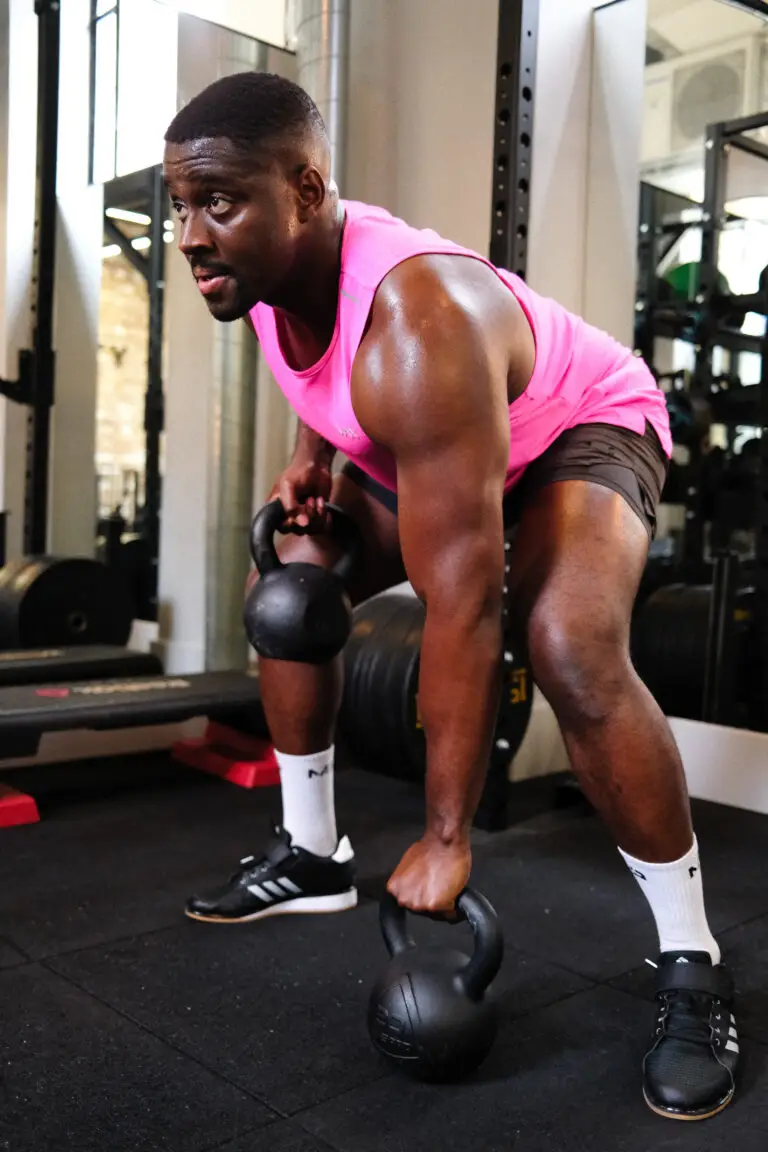
Using a Workout Planner and Tracker for Optimal Scheduling
Juggling your workout schedule with the demands of daily life can be challenging. This is where a workout planner and tracker become an invaluable tool. As a personal trainer, I’ve seen how a good fitness and exercise tracker can make the difference between sticking to a program and falling off the wagon. It’s particularly useful for those who need a flexible home workout planner and tracker.
How the 12reps app schedules your workouts
The 12reps app is designed to take the guesswork out of scheduling. Based on your goals, experience level, and available days, it creates a personalised training schedule for you. For example, if you tell the app you want to build muscle and can only train 3 days a week, it will likely generate a full-body routine for you. If you can train 5 days a week, it might create a push/pull/legs split.
This intelligent scheduling ensures that you train at the optimal frequency for your goals, while also allowing for adequate recovery. The app will also remind you when it’s time to work out, helping you stay consistent.
Recovery tracking features
One of the most advanced features of the 12reps app is its ability to track your recovery. The app can monitor your sleep, your heart rate variability, and your subjective feelings of soreness and fatigue. Based on this data, it can advise you on whether you should push hard in your next workout, take it easy, or even take an extra rest day.
This is a game-changer for preventing overtraining. Overtraining is a state of chronic fatigue and underperformance that occurs when you don’t get enough rest. It can set your progress back by weeks or even months. By using a workout planner and tracker that monitors your recovery, you can ensure that you are always training in the optimal state.
Preventing overtraining with smart planning
The 12reps app also helps prevent overtraining by intelligently managing your training volume. It tracks the number of sets and reps you do for each muscle group and ensures that you are not doing too much, too soon. It also incorporates deload weeks into your schedule, which are planned periods of lower-intensity training that allow your body to fully recover and adapt.
By using a smart fitness and exercise tracker like 12reps, you can take a proactive approach to your training and recovery. This not only leads to better results, but it also helps you build a sustainable, long-term fitness habit.

barbell incline press and barbell bent-over row ) Download the 12reps app to personalise your strength training program.
Conclusion
So, how many days a week should you work out? The answer, as we’ve seen, is that it depends. For most people, 2-4 days of strength training and 3-5 days of cardio per week is a great goal. However, the most important thing is to listen to your body and to find a schedule that you can stick to consistently.
Remember that rest and recovery are just as important as the training itself. And by using a workout planner and tracker like the 12reps app, you can ensure that you are getting the perfect balance of both.

